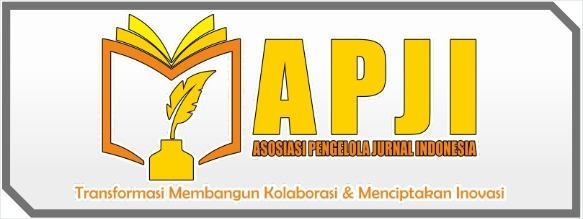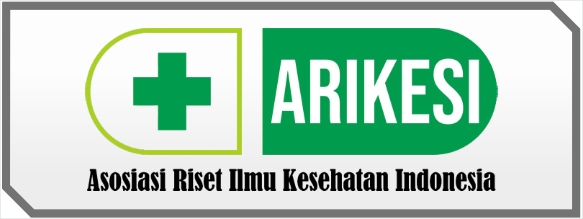Perbandingan Tingkat Kecemasan pada Siswa yang Terpapar dan Tidak Terpapar Pornografi di SMA X Kota Medan
DOI:
https://doi.org/10.57213/tjghpsr.v2i4.473Keywords:
Anxiety, Anxiety Level, Pornogrhaphy, Exposure to PornographyAbstract
Anxiety is an unpleasant feeling, such as excessive worry, fear, and helplessness, which can interfere with daily activities.helplessness, which can interfere with daily activities. In Indonesia,anxiety is ranked as the second highest mental disorder. One of the triggering factor is exposure to pornography, which is now easily accessed by children and adolescents through technological developments. Indonesia ranks third in global pornography access. Research shows that pornography addiction can increase the risk of anxiety by up to 13.5% in adolescents aged 18 years and above. This exposure affects the brain, mental and behavior of children and adolescents. This study used an analytic design observational design with a cross-sectional study approach. The sample consisted of 207students of SMA X Medan City who were selected using the Probability Sampling method with Simple Random Sampling technique.method with Simple Random Sampling technique. Primary data were collected through an online questionnaire online using Google Form.Hasil: Respondents were dominated by students aged 17 years old (60.5%) and the majority were female (67.1%). Level of level of mild anxiety was the most dominant, both in students who were exposed to pornography (24.3%) and those not exposed (32.4%). Statistical analysis statistical analysis showed a significant difference in anxiety levels between students exposed to pornography with those not exposed (P = 0.000; P < 0.05). There is a significant difference in anxiety levels between students exposed to and not exposed to pornography in SMA X Medan City. This finding highlights the importance of prevention and intervention efforts against pornography exposure in exposure to pornography in adolescents to reduce the risk of anxiety.
References
Agastya, I. G. N., Siste, K., Nasrun, M. W., & Kusumadewi, I. (2020). Cybersex addiction: An overview of the development and treatment of a newly emerging disorder. Medical Journal of Indonesia, 29(2), 233–241.
Alarcon, R. D., Iglesia, J. I., Casado, N. M., & Montejo, A. L. (2019). Online porn addiction: What we know and what we don’t—a systematic review. J. Clin. Med., 8, 1–20.
Arnal, R. B., et al. (2022). Pornography consumption in people of different age groups: An analysis based on gender, contents, and consequences. Journal of Sexuality Research and Social Policy, 1–14.
Azzahra, F., Oktarlina, R. Z., & Hutasoit, H. B. K. (2020). Farmakoterapi gangguan ansietas dan pengaruh jenis kelamin terhadap efikasi antiansietas. JIMKI, 6(1), 96–101.
Camilleri, C., Perry, J. T., & Sammut, S. (2021). Compulsive internet pornography use and mental health: A cross-sectional study in a sample of university students in the United States. Frontiers in Psychology, 11, 1–24.
Elviani, N., Nuralita, N. S., & Effendy, E. (2021). Hubungan gangguan ansietas terhadap peningkatan kadar kolesterol pada pasien ansietas yang berobat jalan di RSU Madani Medan. Jurnal Ilmiah Maksitek, 6(2).
Hitalessy, R. Z. M., & Damariyanti, M. (2022). Kontrol diri dan perilaku cybersex pada pengguna akun media sosial alter. Jurnal Psikologi, 15(1), 172–186.
Imawati, D., & Sari, M. T. (2018). Studi kecanduan pornografi pada remaja. Jurnal Psikologi, 1(2), 56–62.
Kementerian Kesehatan RI. (2018). Situasi kesehatan jiwa di Indonesia. RISKESDAS, 3–7.
Kohut, T., & Štulhofer, A. (2018). Is pornography use a risk for adolescent wellbeing? An examination of temporal relationships in two independent panel samples. PLoS ONE, 13(8), 1–20.
Maisya, I. B., & Masitoh, S. (2019). Derajat keterpaparan konten pornografi pada siswa SMP dan SMA di DKI Jakarta dan Banten Indonesia. Jurnal Kesehatan Reproduksi, 10(2), 117–126.
Nafiah, R. W., & Nuralita, N. S. (2021). Hubungan antara gangguan ansietas terhadap peningkatan KGD sewaktu pada pasien gangguan ansietas yang berobat jalan di RSU Madani Medan. Jurnal Ilmiah Maksitek, 6(2).
Narmandakh, A., Roest, A. M., Jonge, P. D., & Oldehinkel, A. J. (2020). Psychosocial and biological risk factors of anxiety disorders in adolescents: A TRAILS report. European Child and Adolescent Psychiatry, 30, 1969–1982.
Prajogo, S. L., & Yudiarso, A. (2021). Metaanalisis efektivitas Acceptance and Commitment Therapy untuk menangani gangguan kecemasan umum. Psikologika, 26(1), 85–100.
Setyawati, R., Hartini, N., & Suryanto. (2020). The psychological impacts of internet pornography addiction on adolescents. Humaniora, 11(3), 235–244.
Štulhofer, A., Tafro, A., & Kohut, T. (2019). The dynamics of adolescents’ pornography use and psychological well-being: A six-wave latent growth and latent class modeling approach. European Child and Adolescent Psychiatry, 28(12), 1567–1579.
Sutatminingsih, R., Josetta, M. R., & Tuapattinaja. (2019). Psikoedukasi pencegahan adiksi pornografi. Jurnal Ilmiah Ilmu Komunikasi, 1(2), 45–51.
Svedin, C. G., et al. (2022). Associations between adolescents watching pornography and poor mental health in three Swedish surveys. Journal of European Child & Adolescent Psychiatry, 1–16.
Vibriyanti, D. (2020). Kesehatan mental masyarakat: Mengelola kecemasan di tengah pandemi COVID-19. Jurnal Kependudukan Indonesia, 69–74.
Downloads
Published
Issue
Section
License
Copyright (c) 2024 The Journal General Health and Pharmaceutical Sciences Research

This work is licensed under a Creative Commons Attribution-ShareAlike 4.0 International License.













